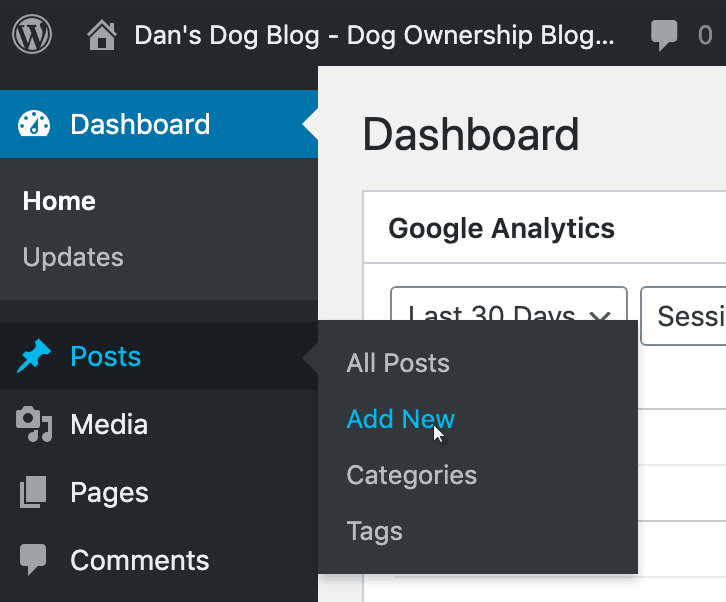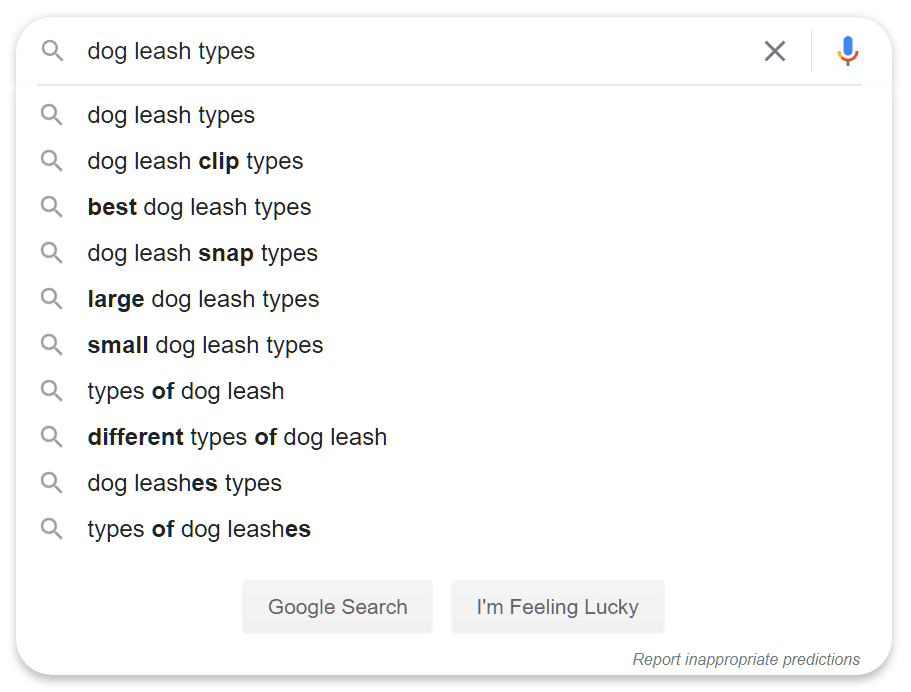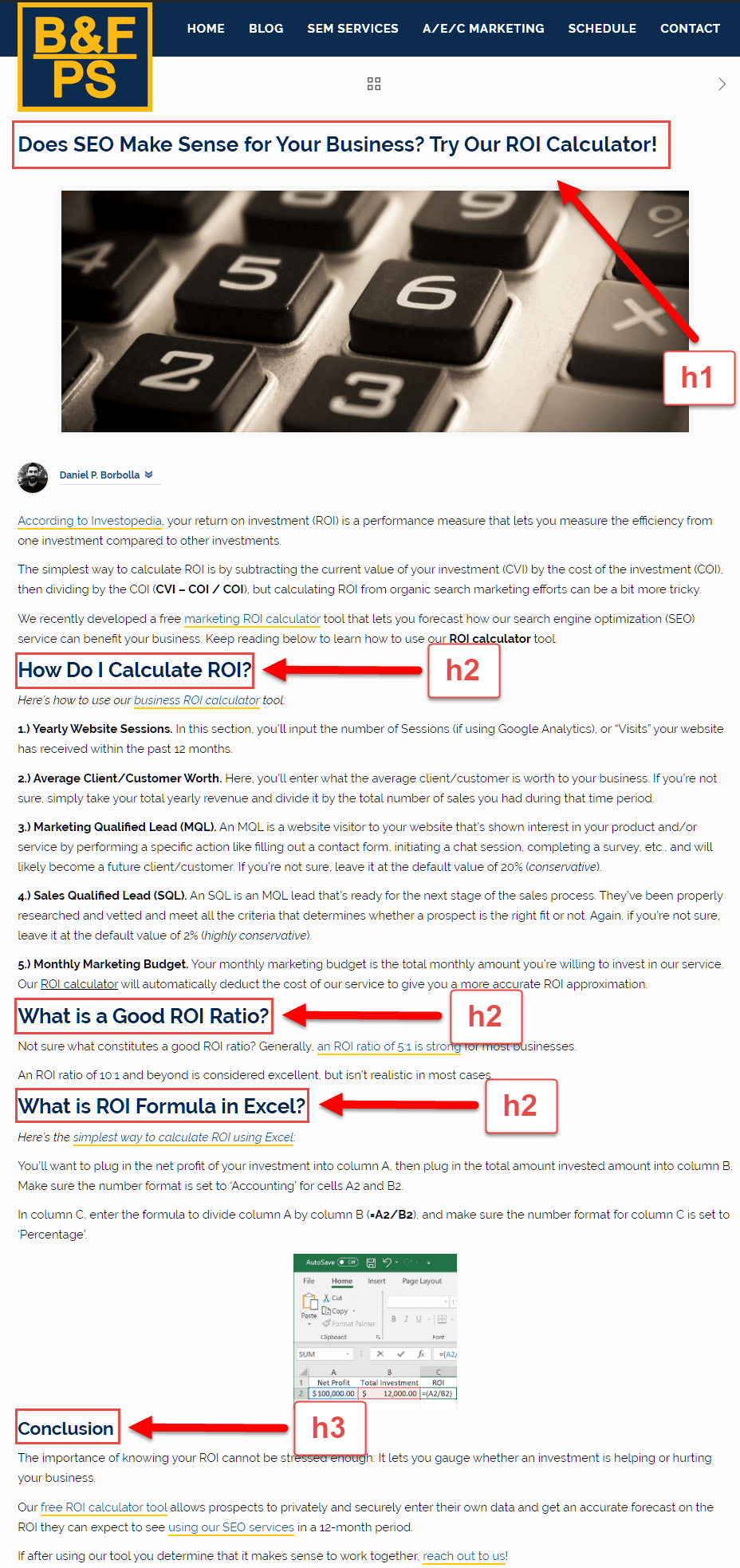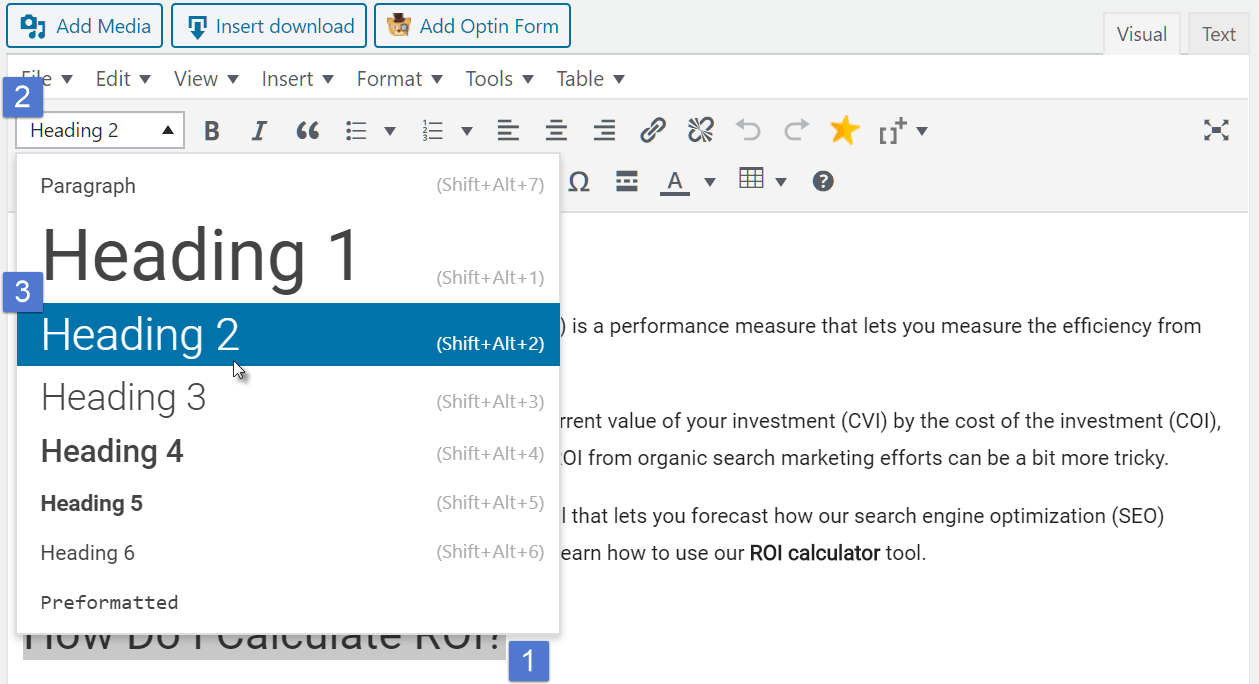- What ChatGPT (OpenAI) Is, How It Works, and How It Relates to SEO - February 16, 2023
- Semantic SEO - December 1, 2022
- Localism and SEO - October 18, 2022
Once you’ve created your WordPress blog and configured its settings, it’s time to learn how to write your first blog post and share it with the world.
Publishing your first blog post may seem a bit daunting, especially when you have to account for things article metadata, keyword research, etc. Rest assured, this article will walk you through how to write your first blog post on WordPress.
Table of Contents
How Often Should I Post on My Blog?
Unfortunately, there isn’t a definitive answer for this type of question. However, at a minimum, we recommend posting at least once or twice per month.
That being said, don’t focus too much on the number of articles you’re putting out (at least not at first). Instead, focus on creating the highest quality content you can and providing the most value for your audience to earn their subscription.
How Do Beginner Blogs Make Money?
The best way for a beginner blog to generate income is through affiliate marketing, where you promote another company’s product/service and earn a commission for each lead or completed sale.
Get started by signing up with any of these trusted networks:
How Do Bloggers Get Paid?
Once you have a few articles under your belt and built up a decent readership, you’ll want to explore other ways to monetize your blog.
Here are some other ways bloggers can get paid:
AD NETWORKS: Display advertisements that are served internally via your own website, or served externally via a CPC/CPM ad network like Google or Bing.
- Adsanity (internal)
- Bing Ads (external)
- Google Adsense (external)
DIGITAL PRODUCTS: Sell your own products and/or services by using one of these digital product-selling platforms.
EMAIL MARKETING: Collect your reader’s emails to build an audience list. You can use your list to promote a new piece of content you’ve written or promote an offer.
MEMBERSHIPS: If you regularly produce special content that you’d like to offer via paid membership, try using any of these membership platforms.
Why Do Blogs Fail?
Most blogs fail because people get into it for all the wrong reasons. They wind up quitting when things don’t go as expected.
Here are 5 common reasons why blogs fail:
1.) Lack of passion. When you aren’t passionate about the subject you’re covering, you run the risk of getting bored and quitting. On the other hand, you can be very passionate about what you’re covering, but if the topic you chose is too specific and narrow, you’ll struggle to build and grow an audience.
2.) Easy money. When you get into blogging for all the wrong reasons and see that the payoff is taking longer than expected, you’ll get fed up and quit.
3.) No promotion. You can put in all the time and effort you want into creating high quality content, but if you don’t promote it via social media, email, blog outreach/guest posting, ads, etc., it won’t get seen.
4.) Lack of consistency. You can’t expect your blog to grow if you’re inconsistent. Creating a posting/promotion schedule and sticking to it is vital.
5.) Too distracted. Focus on establishing and growing your blog first before diving into similar projects. When your attention is divided, it makes it that much more difficult for your blog to succeed.
How Long Should Your First Blog Post Be?
When it comes to choosing how long your first blog should post be, there isn’t a word count set in stone, but we advise writing a minimum of 400-500 words. If the topic you’re covering doesn’t require a lengthy write up, don’t force it!
How Do You Start a Blog Post?
So how do you start a blog post in WordPress? Log into your admin panel then click on Posts > Add New:
How Do I Write My First Blog Entry?
This next section will show you how to write your first blog post in WordPress. If you’re not sure what topic to write about, use a free service like AnswerThePublic, Google Trends, or even Google’s autocomplete function to help you come up with relevant topics that are actively being searched.
For example, typing “dog leash types” into Google search displays the following autocomplete search terms:
After you’ve identified a topic you’d like to write about, use any of the following tools to determine the keyword difficulty and choose the search term that’s easiest for you to target:
- WMS Everywhere (Free)
- Keywords Everywhere (Pay-as-you-go)
- KWFinder (Paid)
You can find more keyword ideas by performing a Google search in private browsing mode for your main keyword. Scroll all the way to the bottom section titled ‘Searches related to’.
For example, “dog leash types” produces the following ‘searches related to’ keywords:
So now that you’ve identified the main keyword and supplementary terms you’d like to target in your article, you’ll need to come up with a good title.
If you’re not sure, try scrolling through your news feeds and choose a few headlines that jump out at you. Then try reverse engineering them to fit your specific industry/niche.
You can also try using headline generating tools like Headline Generator, Kickass Headline Generator, or Portent’s Content Idea Generator.
Here’s a few guidelines we like to follow:
– Use title case for titles and section headings
– Choose an easy-to-read font type and font size
– Maintain a friendly, polite and humble tone throughout
– No more than 2 to 3 sentences per paragraph
– Use your main and supplementary keywords throughout your article (avoid over-usage!)
– Avoid industry jargon
– Make your content readable and accessible
– Include external links to any third party content and use internal links for your own content
– Use a tool like Grammarly to double-check your grammar and spelling
– Break up the monotony by integrating quizzes, infographics, videos, etc.
– Include a clear call-to-action (CTA) for your readers
*If writing isn’t your strong suit and you’re limited by budget at the moment, consider hiring someone on Fiverr or HireWriters. If you want to save time on editing and have a little more room in your budget, we highly recommend using our content marketing services.
Once you have your blog content all written out and edited down, it’s important to label each section with the proper heading to let search engines know what they’re looking at.
Contrary to what most people think, pages are allowed to have multiple Heading 1 (h1) titles, but to keep things simple, we’re leaving the article title as the only h1, using h2 tags for the section titles in between, and using an h3 for the concluding section:
To assign a heading, highlight the section title text and click on the drop-down arrow next to ‘Paragraph’ in your visual editor, then select your heading:
Copy and paste your article title into the Yoast ‘SEO title’ field near the bottom of the post page. Visit SEOptimer’s Free Meta Tag Generator and use their character count tool to write your meta description. Once again, copy and paste your description into the Yoast ‘Meta description’ section.
Lastly, read through your article one final time to make any last minute changes and hit ‘Publish’ when you’re ready. Ping out your article URL using a PingFarm or Ping-o-Matic, and start promoting your post!
Conclusion
Our 3-part series covered how to create a blog on WordPress, how to configure your blog settings, and how to write your first blog post. If you followed our instructions carefully, you should now have a blog that’s fast, secure and publishable.
Remember, if you’re looking to outsource this function and not have to worry about writing and editing articles, we provide content marketing services to build your blog. Don’t forget to subscribe below!
We hope you learned something today about how to write your first blog post on WordPress. Visit our blog for more articles and subscribe to learn more about search engine marketing!






